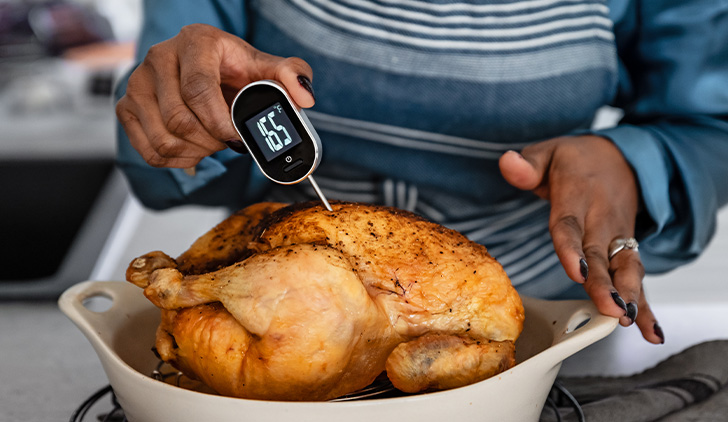
The kitchen is the center of the home, where happy and yummy memories are made. You can keep your food safe and reduce the spread of bacteria and germs by following proper cleaning and food-handling practices.
Keep it clean
Cleanliness is the easiest way to combat the spread of bacteria and germs. Always wash your hands with soap and warm water for at least 20 seconds
- before preparing your food
- if you switch from one food group to another, like raw meat to vegetables
- after using the bathroom, handling the trash can, touching a pet or other activities that get germs on your hands and
- after you finish preparing your food.
Keep kitchen surfaces clean by washing them before and after preparing your food and in between each dish you make. And always rinse your fruits and vegetables under running water before using them in a recipe. For fruits and vegetables with firm skin, use a clean vegetable brush while they’re under running water.
Stay in your lane
When cooking different types of food, don’t cross-contaminate. Always keep raw meat, seafood, poultry or eggs away from other foods and use separate prep areas and utensils for them. If there is limited space and utensils, thoroughly wash everything between preparation steps.
Light a fire under it
When preparing your feast, always cook your food to the proper temperature. To reach the temperature that kills germs
- beef and fish should reach a minimum of 145 F
- eggs and ground meat should reach a minimum of 160 F and
- poultry and any leftovers should reach a minimum of 165 F.
Use a food thermometer to make sure that food is cooked to the proper temperature.
Know when to chill out
Raw food should never be out of the refrigerator for longer than 2 hours. And when thawing food, remember to keep it in the refrigerator and not at room temperature.
After your meal is cooked, put anything that won’t be eaten immediately in a closed container in the refrigerator. Never let food reach the temperature danger zone, which is between 41 and 135 F. To help foods chill rapidly, loosely cover them or place them in shallow containers in the refrigerator.


